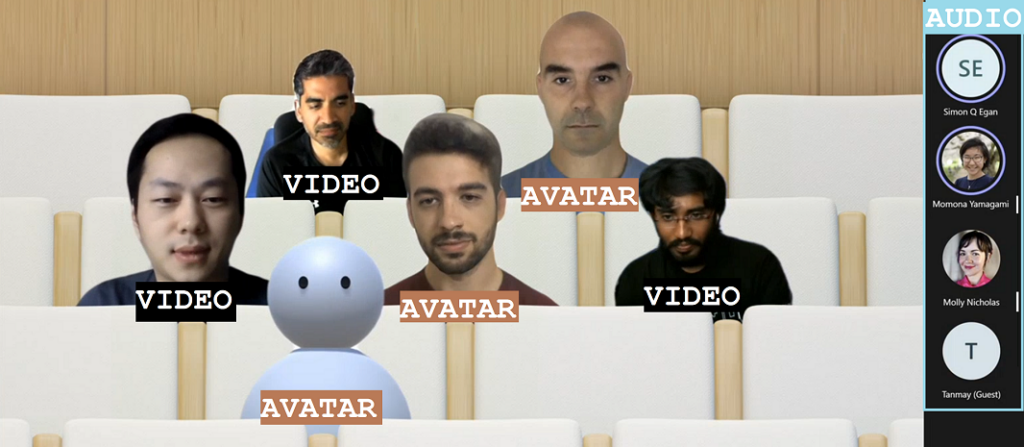AllTogether: Effect of Avatars in Mixed-Modality Conferencing Environments
- Payod Panda ,
- Molly Jane Nicholas ,
- Mar Gonzalez Franco ,
- Kori Inkpen ,
- Eyal Ofek ,
- Ross Cutler ,
- Ken Hinckley ,
- Jaron Lanier
Published by ACM

Visual representation in most video conferencing systems is a binary option between camera on and off. With such systems, voice-only participants might feel left-out, particularly in configurations that situate video participants in a shared virtual environment (e.g., Figure 1). Motivated by the results of a large-scale (n=1140) preliminary study indicating a perceived need for avatar-supported meeting attendance, we developed AllTogether, a system that provides voice-only participants with the option to be represented by an avatar in a call with other video participants. Past research has compared the effect of avatar representations with video and audio, but focused on single-modality calls (i.e. all participants represented as either avatars or video or audio only). We studied the use of our system across three conferencing sessions with 9 participants being represented by a mixture of avatar, video, or voice-only (no visual) representations to better understand users’ perceptions and feelings of co-presence when being represented through these modalities. We found that the visual representation of self and others as well as body motion agency affected participants’ feelings of co-presence and the level to which participants felt others were present in the video call respectively. Our results highlight the implications of visual realism and agency of control on users’ perception of self and others. We propose avatars as a way to expand the binary choice of camera on and off to a spectrum of choices for the user, offer design implications for integrating avatars into video conferencing systems, and update the literature on users’ avatar preferences.
Payod Panda, Molly Jane Nicholas, Mar Gonzalez-franco, Kori Inkpen, Eyal Ofek, Ross Cutler, Ken Hinckley, and Jaron Lanier. 2022. AllTogether: Effect of Avatars in Mixed-Modality Conferencing Environments. In 2022 Symposium on Human-Computer Interaction for Work (CHIWORK 2022). https://doi.org/10.1145/3533406.3539658
